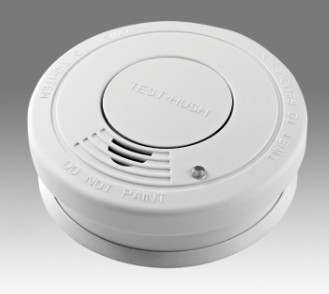In the realm of home safety, classic smoke alarms have […]
In the realm of home safety, classic smoke alarms have long stood as vigilant guardians against the ever-present threat of fires. Employing either photoelectric or ionization technology, these devices act as early warning systems by detecting airborne smoke particles. Yet, as technology progresses and the spectrum of potential fire hazards expands, a critical examination of the reliability of classic smoke alarms in identifying various types of fires becomes imperative. This exploration delves into the nuanced effectiveness of traditional smoke detectors when faced with diverse fire scenarios.
Understanding the Essence: At their core, classic smoke alarms excel at sensing the presence of smoke, a crucial indicator of a potential fire. While these alarms have proven their mettle in countless situations, their efficacy can be influenced by the unique characteristics of different fire types.
Different Fire Dynamics:
Lingering Smoldering Fires: Classic smoke alarms may encounter challenges in promptly detecting slow, smoldering fires—instances where smoke production is gradual and less pronounced. Fires originating from electrical faults, overheated appliances, or faulty wiring may unfold discreetly, necessitating homeowner awareness of potential delays in detection.
Rapidly Spreading Flames: Traditional smoke detectors showcase prowess in alerting residents to rapidly spreading flames that generate copious amounts of smoke. Nevertheless, the swift evolution of these flames can occasionally outpace the alarm's response time, particularly if the fire occurs in a remote section of the home.
Kitchen Conundrums: Cooking-related fires present a common household hazard. Classic smoke alarms may be susceptible to false alarms in kitchen environments, stemming from routine culinary activities. Recognizing these limitations is pivotal for homeowners, as it impacts the reliability of the alarm during genuine emergencies.
Electrical Fire Challenges: Fires stemming from electrical malfunctions pose a unique challenge. The smoke produced in these instances may contain fewer detectable particles, potentially affecting the alarm's sensitivity. An evaluation of the classic smoke alarm's ability to reliably detect electrical fires in their nascent stages is crucial.
Wildfire Realities: Homes situated in wildfire-prone regions necessitate consideration of the efficacy of classic smoke alarms in detecting wildfire smoke. The composition of wildfire smoke can differ significantly from that of conventional household fires, demanding a tailored detection approach.
Conclusion: While classic smoke alarms undeniably play a pivotal role in fortifying homes against fires, their reliability in discerning various fire types is not uniform. Homeowners must be cognizant of the strengths and limitations inherent in these traditional devices, factoring in variables such as fire type, location, and environmental conditions.
As technological strides offer an expanding array of options, including smart detectors with enhanced features, proactive measures such as routine maintenance, strategic placement of detectors, and an astute understanding of the specific needs of one's home are instrumental. Navigating the evolving landscape of fire safety with vigilance and resilience ensures that your home remains well-equipped to face the unforeseen.